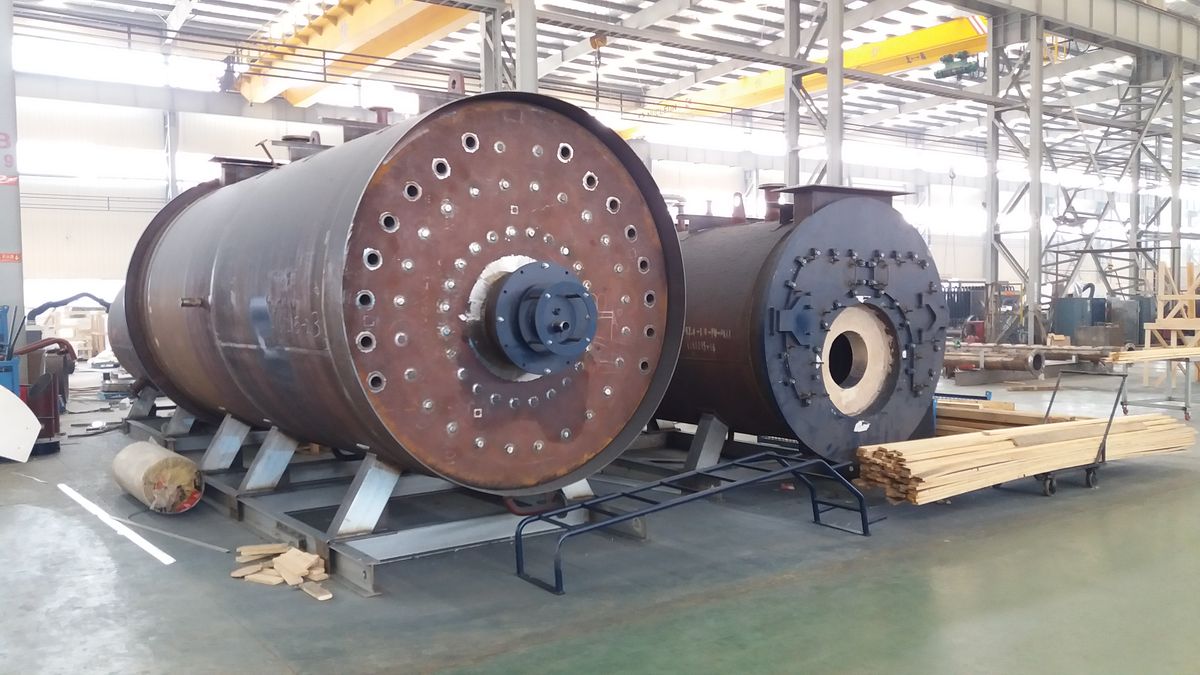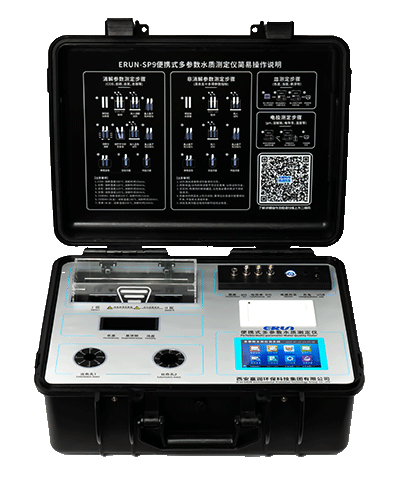Boiler efficiency depends greatly on water quality. When water hardness increases, calcium and magnesium ions build up inside the boiler, forming scale that reduces heat transfer, increases fuel costs, and shortens equipment life.
In this guide, we’ll explain how to reduce boiler water hardness, explore the best treatment methods, and show how the Erun portable multi-parameter water quality tester SP9 helps you monitor water quality easily and accurately.
Water hardness is caused by dissolved calcium and magnesium salts. When these ions enter the boiler system, they precipitate as scale on heat-transfer surfaces.
This scale acts like insulation. Even a thin 1 mm layer can increase fuel consumption by 10% or more. Over time, this leads to overheating, tube damage, and unplanned shutdowns.
That’s why reducing boiler water hardness is not just a maintenance task—it’s a cost-saving strategy. Preventing hardness buildup improves efficiency, lowers operating costs, and extends your boiler’s service life.
Before treatment begins, you must know how hard your water really is. Boiler feedwater hardness is usually measured in parts per million (ppm) or grains per gallon (gpg). For most boilers, hardness should be less than 1 ppm after treatment.
Accurate testing is crucial here. Traditional manual kits can be slow and imprecise, especially when monitoring multiple parameters like pH, conductivity, or total dissolved solids (TDS).
This is where the ERUN-SP9 water quality tester becomes invaluable. It can detect over 60 water quality parameters, including pH, conductivity, salinity, TDS, and water temperature. Its 16-channel optical design allows users to test multiple indicators simultaneously, ensuring precise control over boiler feedwater hardness in real time.
The most effective way to reduce boiler water hardness is to remove hardness ions before they enter the boiler. A water softener uses ion-exchange resin to replace calcium and magnesium ions with sodium, effectively softening the feedwater.
This prevents scale from forming in the system and reduces the need for chemical additives later. Regular monitoring with the ERUN-SP9 helps ensure that your softener is performing optimally by tracking conductivity and TDS changes.
For industrial systems with very hard water, lime-soda softening or reverse osmosis (RO) may be more suitable. Lime softening uses chemical precipitation to remove calcium and magnesium, while RO membranes physically block these ions from entering the boiler feedwater.
Whichever method you use, testing remains essential. The ERUN-SP9 allows operators to compare pre- and post-treatment readings instantly, helping verify that hardness removal is complete before the water reaches the boiler.

Even with good pretreatment, small traces of hardness can still enter the boiler. That’s why internal boiler water treatment is needed as a second layer of defense.
Chemicals such as phosphates and dispersants react with residual hardness to form non-adherent sludge instead of hard scale. This sludge can then be removed during blowdown.
Monitoring chemical efficiency is critical. By measuring pH, conductivity, and dissolved oxygen, the ERUN-SP9 ensures that internal chemistry stays balanced, protecting metal surfaces and maintaining stable boiler operation.
Regular blowdown is the process of removing concentrated dissolved solids and sludge from the boiler. This prevents scale accumulation and keeps water chemistry in check.
Using the ERUN-SP9, operators can track parameters such as TDS and conductivity to determine the ideal blowdown frequency, minimizing water loss while keeping hardness under control.
Maintaining reduced boiler water hardness is an ongoing process, not a one-time fix. Here are key practices:
Test water regularly with reliable instruments like the ERUN SP9 to monitor hardness, pH, and TDS.
Inspect softener systems for resin degradation or salt bridging.
Record daily readings to detect any sudden change in feedwater quality.
Adjust chemical dosing based on test results to maintain proper balance.
Consistent monitoring prevents minor issues from turning into costly breakdowns. With the ERUN-SP9, maintenance teams can perform on-site checks in minutes, ensuring boilers run efficiently and safely.

Every boiler system is different. The right approach depends on several factors: feedwater source, operating pressure, hardness level, and system size.
Before investing in a treatment system, ask these questions:
What is my current feedwater hardness level?
How much makeup water do I use daily?
Do I need continuous monitoring or periodic testing?
For operations requiring flexibility, the Erun water Quality tester is ideal. It supports free combination of parameters, letting you configure the exact tests your system needs—whether for hardness, COD, or conductivity.
Its portability and multi-function capability make it a powerful tool for plant operators, maintenance teams, and quality inspectors who need real-time, reliable water quality data on site.
Hardness in boiler water can silently erode efficiency and increase costs. The best approach to reduce boiler water hardness includes:
1. Measure hardness accurately with a reliable tester like the ERUN-SP9.
2. Treat feedwater externally using softeners or RO systems.
3. Apply internal chemical conditioning and regular blowdown.
4. Monitor continuously to ensure stability and prevent scale.
By combining effective water treatment methods with smart monitoring tools like the ERUN-SP9, you can maintain ideal boiler performance, reduce fuel consumption, and extend the life of your system.
For more information on portable, professional-grade water testing equipment, visit ERUN and discover how the ERUN-SP9 can make water quality management easier and more precise.